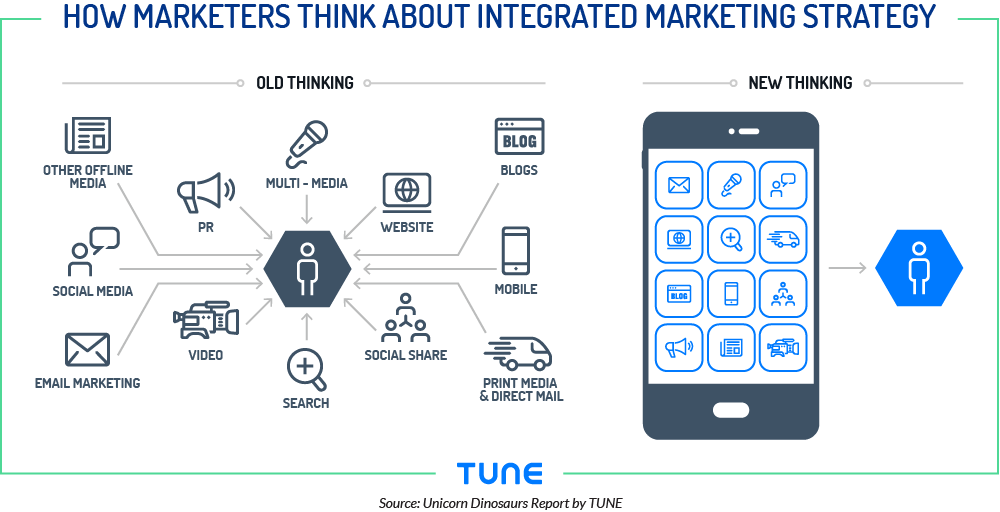
Many marketers are seeing the connection between content marketing and native ads, but are they inferring causation or are they just seeing correlation? Native advertising can be very effective in certain situations. However, it can also be too sales-oriented and unhelpful. This is not a good idea for advertisers or brands, so content marketing is a better option. Joe Walsh says it's better to control your media and audience.
Costs of native advertising and content marketing
If you compare the costs of native advertising and content marketing, it may not always be the most cost-effective option. Although both can be successful, they are not necessarily equal. One advantage of content marketing is that it can generate a higher ROI, while native advertising can deliver guaranteed placement with big-name publishers. Both methods have higher costs overall. It is important to weigh the pros and cons of each option before making a decision.
When it comes to measuring the impact of your content marketing efforts, paid ads may be the best choice. Content marketing provides increased organic traffic and a diverse link portfolio. Native advertising, on the other hand, can be more expensive and cost thousands of dollars. HubSpot's research has shown that 93% of businesses with marketing budgets above $1 million to $5,000,000 are using inbound marketing. This strategy has a low risk and high ROI.

Advertisement
Content marketing versus native advertising has many similarities. The key difference is that native ads are typically labeled as sponsored content rather than as advertisements. This makes them more persuasive and users respond positively to messaging that follows editorial material. Content marketing, on the other hand, is where ads are embedded into original content. Both strategies have their strengths and may work for one brand or company. You may be wondering which strategy is better: these are examples of native advertising or content marketing.
Native advertising and content marketing share similar goals. The primary difference is that native content does not give the brand or publisher full ownership of the content, which limits the potential for it to have lasting value. The two strategies are frequently used interchangeably. They have some key differences. One example is that the effectiveness of content-marketing depends on the audience it targets. Native content that is relevant to your target audience can provide a short-term boost, but it may not be enough for you brand.
Engagement metrics can be a better indicator about overall brand advantages
Pageviews may be an easy way to gauge the success of a content marketing program, but they can not be used as a metric. Although increasing pageviews will lead to more traffic, engagement does not always indicate that content quality has improved. Engagement metrics like time on page views per session provide more detailed information about the overall effectiveness of a marketing campaign. Google Analytics or another tracking tool is used to measure engagement.

Buyers in the digital age are reading content at their own pace. They also jump in and exit the buying cycle. It is difficult to calculate the number "qualified buyers" by the number and type of actions they take with a piece of content. Instead, engagement is an indicator of the overall value of the content that is resonating with your audience.
FAQ
How long will it take for content marketing to be started?
It depends on how large your business is. Smaller companies usually don't have enough resources to invest in content marketing immediately. However, it can pay off big-time if you're willing to put in some time.
How can content marketing be measured for success?
There are many different ways to evaluate the effectiveness your content marketing strategy.
Google Analytics is a good tool to measure your progress. This tool lets you see where your targeted traffic comes from and what pages they visit most frequently.
It will also show you how long each visitor stays before leaving your site.
This information can be used to improve your content and to keep people engaged for longer periods.
Another method of measuring the success of your content marketing efforts is to ask yourself these questions:
Do my new subscribers get any value from my email newsletters or not? How much of my entire mailing lists have become paid members? How many people clicked through to my landing pages? Do those who click through convert at higher rates than others?
These are all important metrics to track, monitor, and report on over time.
A third great way to measure the success of content marketing is to count how many people share your content through social media.
If you're not doing that already, consider starting now. It could mean the difference between being seen and unseen in your industry!
How do I measure success with content marketing?
There are many ways that you can measure your content marketing effectiveness. One method is to count the number of people who visit your website. The other is to see how many leads you generate.
What is my ROI for using a Content Marketing Strategy
Businesses that use a Content Marketing Strategy have an average ROI of between 5x-10x higher than those that don't.
A Content Marketing Strategy is used to generate leads and sell.
It can also provide valuable insight into your company. These insights will help you make better decisions such as identifying opportunities and improving customer service.
Let me tell you how much you can make from your Content Marketing Strategy.
You can easily increase your overall revenue.
Statistics
- Progress indicators (0–100%) allow each team member to see how attainable each goal is and understand what remains to be accomplished. (semrush.com)
- To further show the importance of this, 89% of people have stopped doing business with a company because of a poor experience. (neilpatel.com)
- According to research compiled by Coschedule: Companies that publish 16+ blog posts a month get as much as 3.5x as much traffic as those that publish 0-4 posts a month. (criteo.com)
- In fact, would pay more for a better customer experience, and 86% of B2B buyers would pay more. (neilpatel.com)
- We found that 40% of businesses don't have a documented strategy yet. (semrush.com)
- Companies that use content marketing see approximately 30% higher growth rates than businesses not using it. (mailchimp.com)
- Forty-seven percent of buyers view 3 to 5 pieces of content before engaging with a sales representative. (mailchimp.com)
- According to the Content Marketing Institute, 70% of B2B marketers and 86% of B2C marketers surveyed use content marketing in some form or other. (criteo.com)
External Links
How To
How can you make videos more exciting?
Video Marketing is one the most powerful tools in Content Marketing. Video Marketing allows you to connect with your audience and create trust. But how can we transform boring into something amazing? Let's get down to it!
-
Tell a tale. Storytelling is the core of any communication. Video marketing doesn't work without storytelling. You must decide what stories you want. Are you looking for something that is entertaining? Educational? Inspiring? Social media is full of people telling their stories through photos and videos. Be inspired by these stories and use them as inspiration for yours.
-
Use images. Images help convey emotions faster than words. They allow us to connect with others and feel empathy. Make sure to include images in all your videos. You have two options: add images to your slideshows and embed them in your blog posts.
-
Make it easy to share. It's important to make it easy to share your message with others. Your videos should include sharing buttons. Slideshows can include social icons. You can also add "Share" boxes to videos if your channel is YouTube.
-
Don't overdo it. Too many graphics and too many details can cause viewers to lose interest. Keep things simple. A few striking images can be enough to attract attention and keep people's attention.
-
Keep it simple. Short videos are very popular. Make short videos, no more than 5 minutes, to build buzz around your brand.
-
Get feedback. Listen to your audience. Ask them about what works for them and what doesn’t. To improve your content, use their answers.
-
Create a plan. After you have created your first video, you should think about what you can do next. Can you create a series? Maybe you can create a playlist with the most watched videos?
-
Test, test, test. It is not good to publish a video and then discover that nobody has seen it. Make sure you test the video with your audience before releasing it. Take a look at the reactions. Based on your results, make changes.
-
Repeat. Repeat steps 1-8 until you find the perfect formula. Once you have a good idea of what works, it will be easy to create stunning videos.
-
Measure the results. It's crucial to measure the success and failure of your videos. How did they perform? What are the preferences of certain audiences? These questions will help to refine your strategy.
-
As needed, adjust. Once your video campaign has launched, don't stop learning. Learn from your mistakes, and make adjustments as needed. The best marketers are always open to learning and improving.
-
Enjoy it. While video marketing isn't difficult, it takes patience. With experience you will discover new strategies, techniques, ideas, and methods to help you grow business.